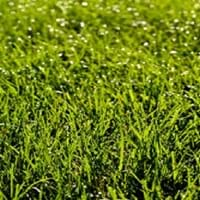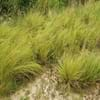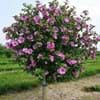What is
Life Span
Perennial
Perennial
Type
Grass
Tree
Origin
Southern Asia, India
Europe, Northern Africa, Western Asia
Types
Not Available
A. campestre var. campestre - downy fruit
A. campestre var. leiocarpum (Opiz) Wallr. (syn. A. campestre subsp. leiocarpum) - hairless fruit
Number of Varieties
50
99+
2
99+
Habitat
Warmer regions
Forest margins, gardens, Suburban areas, Woods
USDA Hardiness Zone
6-11
5-8
AHS Heat Zone
11- 6
8-4
Sunset Zone
H1, H2, 5, 6, 7, 8, 9, 10, 12, 13, 14, 15, 16, 17, 18, 19, 20, 21, 22, 23, 24
2a, 2b, 3a, 3b, 4, 5, 6, 7, 8, 9, 14, 15, 16, 17
Habit
Mat-forming
Oval or Rounded
Information
Plant Size
Minimum Height
40.00 cm
99+
910.00 cm
99+
Minimum Width
302.00 cm
99+
910.00 cm
23
Plant Color
Flower Color
Not Available
Green, Light Yellow
Flower Color Modifier
Bicolor
Bicolor
Fruit Color
Not Available
Light Yellow, Light Pink, Light Green, Tan
Leaf Color in Spring
Gray Green, Dark Green
Green, Light Green
Leaf Color in Summer
Light Green
Dark Green
Leaf Color in Fall
Gray Green, Dark Green
Yellow, Gold, Tan
Leaf Color in Winter
Gray Green, Dark Green, Tan
Not Available
Shape
Leaf Shape
Arrowhead
Maple shaped
Thorns
No
No
Season
Plant Season
Spring, Summer, Fall, Winter
Spring, Summer, Fall
Growing Conditions
Sunlight
Full Sun
Full Sun, Partial Sun
Growth Rate
Fast
Slow
Type of Soil
Clay, Loam, Sand
Clay, Loam, Sand
The pH of Soil
Acidic, Neutral, Alkaline
Acidic, Neutral, Alkaline
Soil Drainage
Well drained
Average
Bloom Time
Indeterminate
Early Spring
Repeat Bloomer
Yes
No
Tolerances
Pollution, Salt, Soil Compaction
Pollution, Soil Compaction
Care
Where to Plant?
Container, Ground
Ground
How to Plant?
Seedlings
Grafting, Seedlings, Transplanting
Plant Maintenance
Medium
Medium
Watering Plants
Watering Requirements
Average Water Needs
Needs watering once a week, Requires watering in the growing season
In Summer
Lots of watering
Lots of watering
In Spring
Moderate
Moderate
In Winter
Average Water
Average Water
Soil
Soil pH
Acidic, Neutral, Alkaline
Acidic, Neutral, Alkaline
Soil Type
Clay, Loam, Sand
Clay, Loam, Sand
Soil Drainage Capacity
Well drained
Average
Sun Exposure
Full Sun
Full Sun, Partial Sun
Pruning
Not Available
Prune if you want to improve plant shape, Prune in winter, Prune to stimulate growth, Remove damaged leaves, Remove dead leaves, Remove deadheads
Fertilizers
Apply 3-1-2 or 4-1-2 ratio, Nitrogen
All-Purpose Liquid Fertilizer
Pests and Diseases
Red blotch
Fungal Diseases
Plant Tolerance
Pollution, Salt, Soil Compaction
Drought
Facts
Flowers
Insignificant
Insignificant
Flower Petal Number
Single
Single
Fruits
Showy Fruit
No
Yes
Edible Fruit
No
No
Fragrance
Fragrant Flower
No
No
Fragrant Fruit
No
No
Fragrant Leaf
No
No
Fragrant Bark/Stem
No
No
Showy Foliage
No
Yes
Showy Bark
No
No
Foliage Texture
Fine
Medium
Foliage Sheen
Matte
Glossy
Evergreen
No
No
Invasive
Sometimes
No
Self-Sowing
Yes
Yes
Attracts
Flying insects, Insects
Not Available
Allergy
breathing problems, Eye irritation, Hives, Itchiness, Runny nose, sneezing, Throat itching, Whooping Cough
Asthma
Benefits
Uses
Aesthetic Uses
Ground Cover, Landscape Designing
Showy Purposes
Beauty Benefits
Skin irritation, Skin Problems
Not Available
Edible Uses
Insignificant
Yes
Environmental Uses
Air purification, Prevent Soil Erosion, soil stabilisation
Air purification
Plant Benefits
Medicinal Uses
Cures constipation, Cures foot fissures, Digestive disorders, Eliminate toxins, Fatigue, Halitosis, Improves Breast milk production, Increase red blood cells, Insomnia
Sore Eyes
Part of Plant Used
Leaves, Stem
Bark, Sap
Other Uses
Animal Feed, Cattle Fodder, Used as Ornamental plant
Grown for shade, Used in Furniture, Used in making musical instruments
Used As Indoor Plant
Insignificant
No
Used As Outdoor Plant
Yes
Yes
Garden Design
Lawns and Turf
Feature Plant, Hedges, Screening / Wind Break, Shade Trees
Scientific Name
Botanical Name
CYNODON dactylon
ACER campestre
Common Name
Bermuda Grass
Field Maple, Hedge Maple
In Hindi
बरमूडा घास
फील्ड मेपल
In German
Bermuda Gras
Feld-Ahorn
In French
l'herbe des Bermudes
Maple terrain
In Spanish
Grama
arce de campo
In Greek
Αγριάδα
Το πεδίο Maple
In Portuguese
grama Bermuda
bordo de campo
In Polish
Trawa Bermuda
Klon polny
In Latin
Bermuda Grass
Field Maple
Classification
Kingdom
Plantae
Plantae
Phylum
Magnoliophyta
Magnoliophyta
Class
Liliopsida
Magnoliopsida
Order
Cyperales
Sapindales
Family
Poaceae
Aceraceae
Genus
Cynodon Rich
Acer
Clade
Angiosperms, Commelinids
Angiosperms, Eudicots, Rosids
Tribe
Chlorideae
Not Available
Subfamily
Chloridoideae
Hippocastanoideae
Number of Species
2
99+
128
99+
|
||
|
||
|












